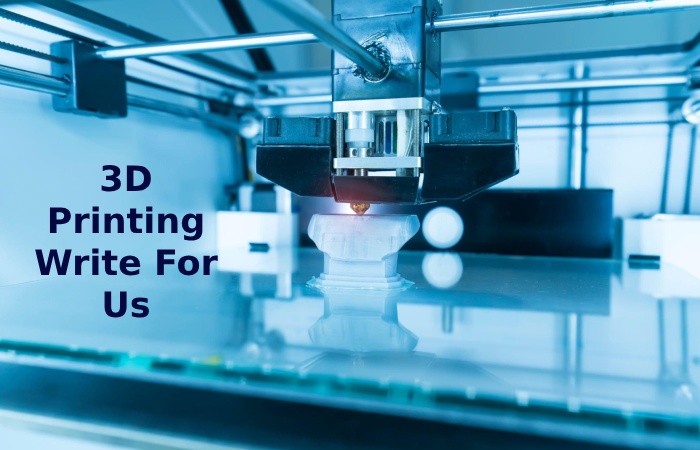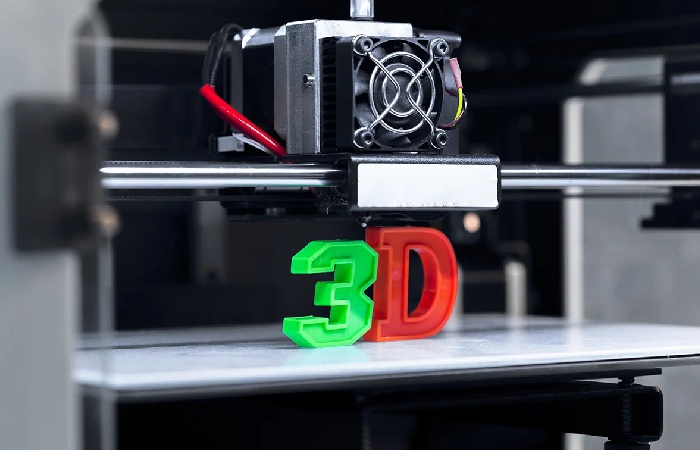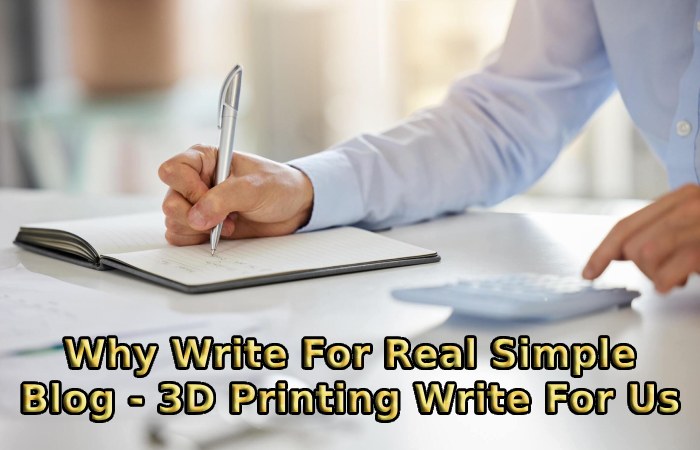
3D Printing Write For Us
3D Printing Write for Us – If you want to contribute a guest post for 3D Printing, you’ve come to the right place! Our blog, Real Simple Blog always on the lookout for writers interested in 3D Printing who can provide fresh content for our blog. Writing for us will help you gain experience, enrich your resume, and promote your name on one of the leading websites on 3D modeling. Furthermore, sharing links to your site will improve its Domain Authority.
It is annoying to see that quality 3D printing analyses or brilliant 3D design projects are only limited to a particular social media group. At the same time, it is not the most straightforward task to start a website for a broader online audience; it is time and resource-consuming. Real Simple Blog offers an opportunity to publish 3D design and 3D printing-related content, which will benefit authors by giving them extra publicity and other bonuses.
Types of Articles Categories We Accept
Real Simple Blog publishes News articles, the newest fashion and food blogs, articles related to parenting and health, children’s education, technology, small business, cyber security, digital marketing, Information/News, 3D Printing For Education, artificial intelligence (AI), family holidays and weekends, hunting, tech, beauty and skin, architecture and interior design ideas, home improvement designs, apps, gadgets, and many other trending stories on our website. We seek talented, passionate writers and content creator specialists for the Real Simple Blog.
What Is 3D Printing?

3D (Three-dimensional) Printing is an additive manufacturing process that generates a physical object from a digital design. The method works by laying down thin layers of material in liquid or powdered plastic, metal, or cement and then fusing the layers.
Essential Points Of 3D Printing
- 3D Printing is a preservative manufacturing process in which a physical object originates from a digital design by printing thin coats of material and then combining them.
- Some industries, such as hearing aids, airline, and car manufacturers, use 3D Printing to make prototypes and mass produce their products using routine scans.
- Whereas it is currently too slow to work in mass production, 3D printing tech is still developing and can potentially massively disrupt the manufacturing logistics and inventory management industries.
What is 3D printing material used for?
Compounds such as carbon fiber manage in 3D printers. As a top coat over plastic things, the purpose is to strengthen the plastic. The combination of carbon fiber over plastic uses in the 3D printing industry as a fast, appropriate alternative to metal.
Types of 3D Printing Technology
The term 3D printing encompasses numerous manufacturing technologies that build parts layer-by-layer. Each varies in how they form plastic and metal parts and can differ in material selection, surface finish, durability, manufacturing speed, and cost.
There are numerous types of 3D Printing, which contain:
Stereolithography (SLA)
It is the original industrial 3D printing process. SLA printers excel at producing parts with high levels of detail, smooth exterior finishes, and tight tolerances. Its general uses in the medical industry and typical applications include anatomical models and microfluidics. We use Vipers, ProJets, and iPros 3D printers manufactured by 3D Systems for SLA parts.
Selective Laser Sintering (SLS)
SLS melts with nylon-based powders into solid plastic. Since SLS parts are of actual thermoplastic material, they are durable, appropriate for functional testing, and can support living hinges and snap-fits. Many SLS parts work for prototyping designs that will one day be injection-molded.
PolyJet
A different 3D printing method for plastic exists called PolyJet. It may create pieces with many characteristics, including different colors and materials. Designers can use the tech to prototype elastomeric or over-molded components. With PolyJet, you can avoid making an early tooling investment if you’re designing an over-molding or silicone rubber design.
Digital Light Processing (DLP)
It uses light to cure liquid resin, which is similar to SLA. The main distinction between the two technologies is that DLP utilizes a UV laser, whereas SLA utilizes a digital light projector screen. DLP 3D printers’ ability to picture a complete build layer concurrently achieves faster build times.
Multi Jet Fusion (MJF)
Multi Jet Fusion creates functional pieces from nylon powder, just as SLS. MJF applies fusing chemicals to the bed of nylon powder using an inkjet array rather than a laser to sinter the powder. The layers join by a heating element moving across the bed. The MJF process also has a quicker build time, which lowers production costs.
Fused Deposition Modeling (FDM)
It is a standard desktop 3D printing technology for plastic parts. Plastic filament is extruded layer by layer onto the build platform by an FDM printer, which is a quick and inexpensive way to create physical models. There are some instances when FDM comes under functional testing, but the technology is partial due to parts having relatively rough surface finishes and lacking strength.
How To Submit Article For Real Simple Blog
To submit article, you can pitch us at contact@realsimpleblog.com
Why Write For Real Simple Blog – 3D Printing Write For Us

- Writing for Real Simple Blog can give massive exposure to your site for customers looking for 3D Printing.
- Real Simple Blog presence is on social media and will share your article with the 3D Printing-related audience.
- You can reach out to 3D Printing enthusiasts.
3D Printing Write For Us Related Search Terms
- 3D printing technology
- Additive manufacturing
- 3D printing materials
- Rapid prototyping
- 3D printer models
- DIY 3D printing
- 3D printing software
- Industrial 3D printing
- 3D printing services
- 3D printing applications
- 3D printing market trends
- 3D printing industry news
- 3D printing innovations
- 3D printing techniques
- 3D printing advancements
- 3D printing workshops
- 3D printing tutorials
- 3D printing troubleshooting
- 3D printer maintenance
- 3D printing community forums
Search Terms – 3D Printing Write For Us
3D Printing Write For Us
Write For Us 3D Printing
3D Printing + Write For Us
Write For Us + 3D Printing
Guest Post + 3D Printing
3D Printing + Guest Post
Submit an article
Contribute 3D Printing
3D Printing Submit post
3D Printing writers wanted
Article Guidelines On Real Simple Blog – 3D Printing Write For Us
- We at Real Simple Blog welcomes fresh and unique content related to 3D Printing.
- Real Simple Blog allow a minimum of 500+ words related to 3D Printing.
- The editorial team of Real Simple Blog does not encourage promotional content related to 3D Printing.
- For publishing article at Real Simple Blog Pitch us at contact@realsimpleblog.com
- Real Simple Blog allows article related to Lifestyle, Food, Beauty, Money, Shopping, Entertainment and many more
Related Pages:
Money Write For Us
Newsletter Write For Us
Fashion Write For Us
Sports Write For Us
Lifestyle Write For Us

